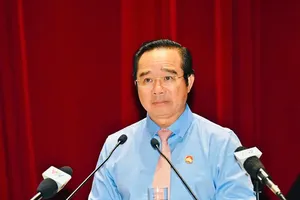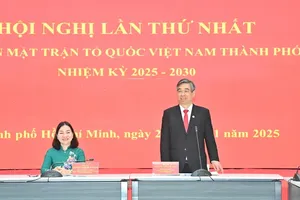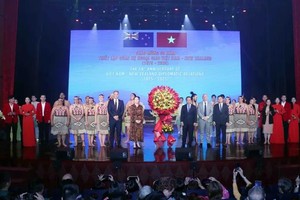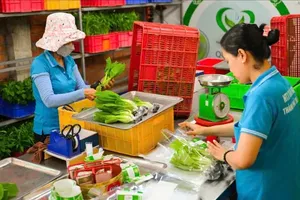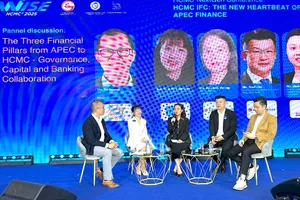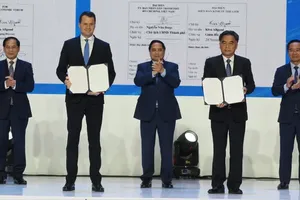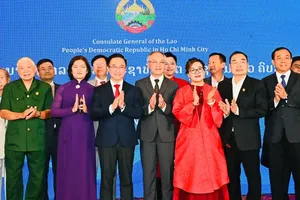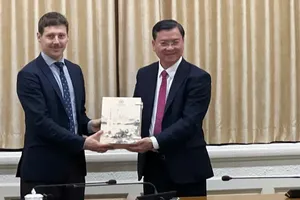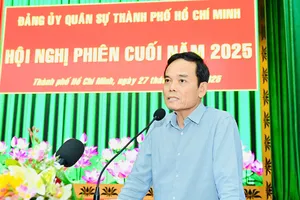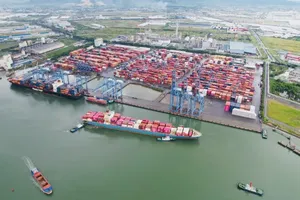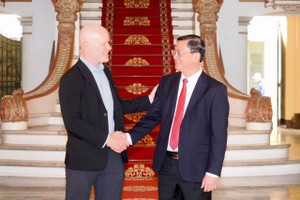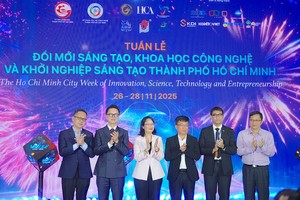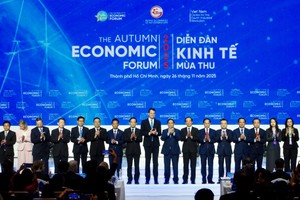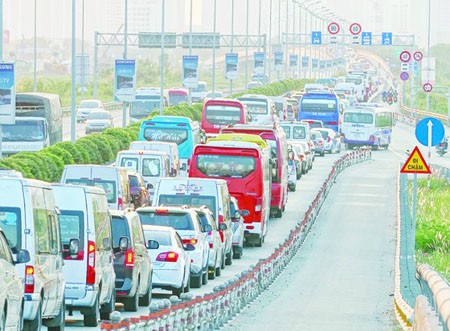
In the last few years, HCMC has continuously pour capital into construction project to improve traffic facilities at its four main gateways. Road expansion, new overpasses and tunnels have been introduced in hope of easing the gridlocks; however, congestions still happen, particularly at weekends and on national holidays.
Each day, thousands of vehicles use the overpass on Nguyen Van Linh Street to either enter National Way No.1 or HCMC – Trung Luong Expressway heading to the Mekong Delta. Due to the small surface area, the street is not able to fulfill its duty, and traffic jams have become a familiar picture to the local here.
Sharing a similar fate is Truong Chinh Street and National Way No.22 to link between HCMC’s downtown and the Northwest urban area, the neighboring provinces of Tay Ninh, Long An, and Binh Duong. As this is the key route, the traffic volume each day is especially high.
Thanks to the recent introduction of 3-level An Suong Intersection (tunnel – regular street – overpass), traffic seem better. Yet the 200-meter core area still faces congestions.
Traffic jams at the eastern gateway have been liken to a specialty of the area, forcing HCMC to request expansion work for HCMC – Long Thanh – Dau Giay Expressway. Major routes leading to Cat Lai Port like Hanoi Highway, Mai Chi Tho Street, Dong Van Cong Street, Nguyen Thi Dinh Street, and Ring Road No.2 are always full of vehicles.
The situation is so severe and tiresome that it takes a few hours for cargo trucks from Amata Industrial Park (in Bien Hoa City of Dong Nai Province) to reach HCMC, which is only 20kilometers away.
The case is not at all better for vehicles from HCMC to Binh Duong Province via National Way No.13, passing so many bottlenecks due to narrow roads.
According to the HCMC Department of Transport, traffic congestions at the city’s main gateways occur because the land reserve for traffic infrastructure is too low compared to the so fast-paced urbanization here.
Therefore, this department have initialized several traffic projects from now until 2030 at all 4 gateways. The city will prioritize any projects at traffic hot spots and on streets with high traffic volume to alleviate congestions, said Deputy Director of the HCMC Transport Department Phan Cong Bang.
In the western gateway, road expansion will take place in National Way No.1 while Nguyen Van Linh Street will be upgraded to accommodate more vehicles heading to HCMC – Trung Luong Expressway. Another focused project is the expansion of National Way No.50 from HCMC to the provinces of Long An and Tien Giang.
In the northwest gateway, the project to build HCMC – Moc Bai Expressway has been proposed to erase traffic jams from the city to Tay Ninh Province.
In the eastern gateway (Thu Duc City), detailed plans to build Cat Lai Bridge and a new connection road between Long Phuoc Street to HCMC – Long Thanh – Dau Giay Expressway are prepared. Road expansion will be done on Hanoi Highway, Luong Dinh Cua Street, Dong Van Cong Street. New construction works will begin to prolong Ring Road No.2 (from Pham Van Dong Street to Go Dua Intersection), to create My Thuy Intersection, An Phu Intersection, Tang Long Bridge, Nam Ly Bridge.
Obviously, the building workload to improve traffic infrastructure in HCMC is extremely enormous. Most of these projects need doing urgently and synchronously.
However, owing to a serious lack of land reserve as well as finance resources, experts in the field suggest that the municipal authorities must first try to finish the land clearance and compensation task before commencing any real construction, minimizing overhead cost.
The HCMC Transport Department has just proposed to HCMC People’s Committee to assign the department to adjust investment policies for any projects that are carried out as the total investment and land compensation amounts have increased.
In the absence of the Prime Minister’s announcement on middle-term capital plan from 2021-2025, the department suggested allowing investors to research and then propose projects to run under the Public – Private Partnership (PPP model according to regulations.
